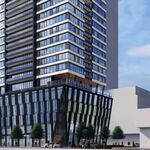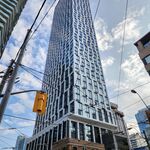C
circuitboy84
Guest
Recently there has been a flurry of new developments in the downtown core. Condos are popping up everywhere and Toronto is poised to welcome 3 new office towers to its skyline.
My question to you all is do you think the cities infrastructure can handle the influx of people in the core?
With the combination of RBC Centre, Telus, and Bay Adelaide centre we will be adding approximately 15,000 people working in the core in the next 2 years. The other significant buildings proposed or under construction in the area are Maple Leaf Square, Ritz Carlton, Shangri-La, 151 Front Street West, Sapphire Tower, Trump Tower, and the massive Cityplace development. All of these structures will probably be completed by 2012.
These people will be using the several core subway stops, Queen, King, St. Andrew, Osgoode, and most importantly Union station. We will also see a significant increase in GO transit passengers.
The King and Queen streetcars are already packed and frustrating to use going in and out of the core.
Road usage during peak periods is already at capacity. The Gardiner is usually slow between 8am - 10am and again at 3pm - 6pm. The major arteries become gridlock; Front, Spadina, Bay, University, York etc.
Toronto has not seen such an increase in people in the core for two decades. From my knowledge trying to move whether on foot through the PATH, in a car, or on transit during peak periods is a harrowing experience already.
To my knowledge the following projects are designed to help curb the problem. The PATH extension, the King street ROW, the Simcoe and Front street extension's.
What can Toronto do to alleviate the impending crisis?

Lake shore at "rush hour".

Union during peak usage.

Looking up Peter Street from Front to Queen Streets after a Jays game.
My question to you all is do you think the cities infrastructure can handle the influx of people in the core?
With the combination of RBC Centre, Telus, and Bay Adelaide centre we will be adding approximately 15,000 people working in the core in the next 2 years. The other significant buildings proposed or under construction in the area are Maple Leaf Square, Ritz Carlton, Shangri-La, 151 Front Street West, Sapphire Tower, Trump Tower, and the massive Cityplace development. All of these structures will probably be completed by 2012.
These people will be using the several core subway stops, Queen, King, St. Andrew, Osgoode, and most importantly Union station. We will also see a significant increase in GO transit passengers.
The King and Queen streetcars are already packed and frustrating to use going in and out of the core.
Road usage during peak periods is already at capacity. The Gardiner is usually slow between 8am - 10am and again at 3pm - 6pm. The major arteries become gridlock; Front, Spadina, Bay, University, York etc.
Toronto has not seen such an increase in people in the core for two decades. From my knowledge trying to move whether on foot through the PATH, in a car, or on transit during peak periods is a harrowing experience already.
To my knowledge the following projects are designed to help curb the problem. The PATH extension, the King street ROW, the Simcoe and Front street extension's.
What can Toronto do to alleviate the impending crisis?

Lake shore at "rush hour".

Union during peak usage.

Looking up Peter Street from Front to Queen Streets after a Jays game.




